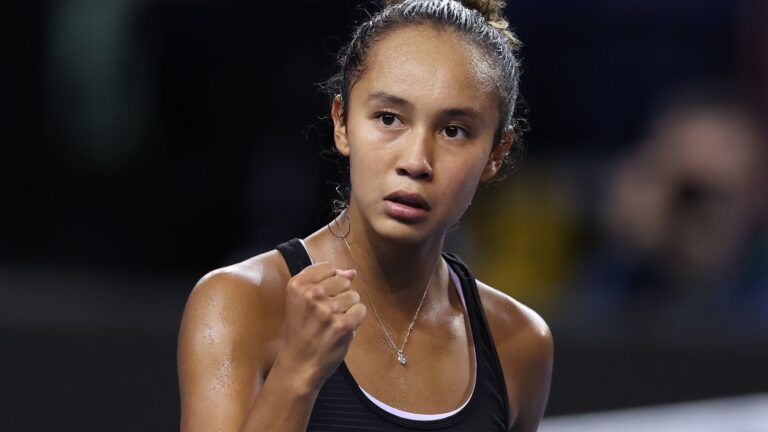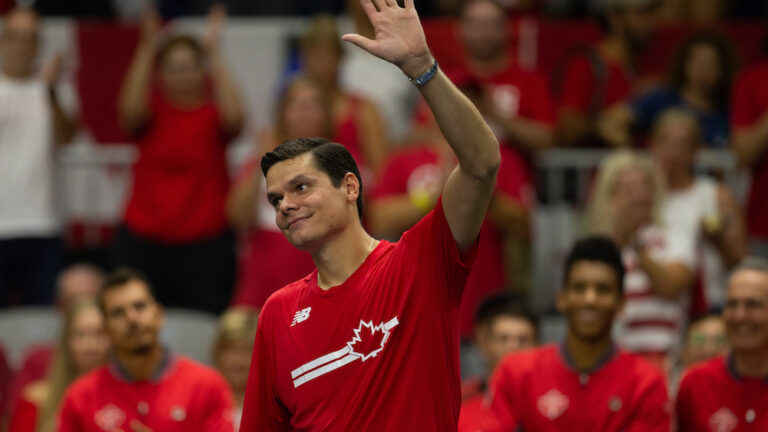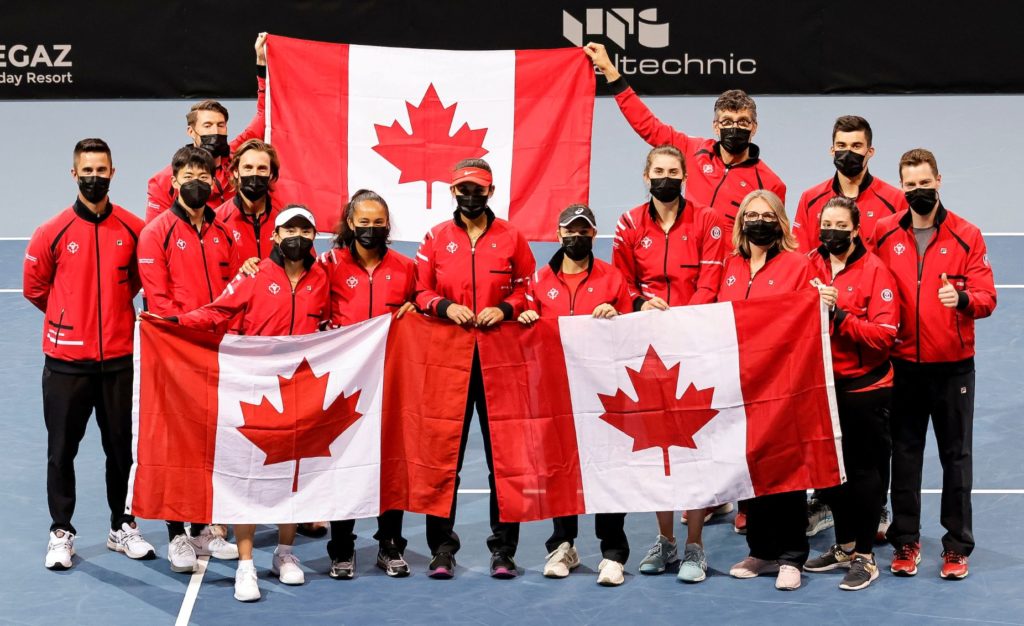
Photo : Tennis Canada
By the time you read this, the Canadian squad and its captain Sylvain Bruneau will be hard at work at the Billie Jean King Cup Finals—the world’s leading international team tennis competition (formerly Fed Cup).
Initially organized in Budapest, the tournament was moved to the Czech Republic.
Yes, Sylvain Bruneau. Because regular captain Heidi El Tabakh had to skip the event for a more personal one: her wedding.
And, yes, Canada. Because though we weren’t supposed to go, we were selected to replace former host country Hungary. As the highest-ranked winning nation at the Play-Offs in April, our Canadian crew officially booked their tickets on August 21.
To keep things fresh and modern, Billie Jean King Cup will be taking much the same approach as the 2019 Davis Cup, with a total of 12 teams going head-to-head at the O2 Arena in Prague from November 1 to 6.
The teams are divided into four groups of three and will compete in a round-robin format in which each nation plays two singles matches and one doubles against the two others (same format as the former Fed Cup). The winners of each of the four groups will move on to the semi-finals.
Without Bianca Andreescu (No.21) or Leylah Fernandez (No.27), the squad will be counting on Rebecca Marino (No.147), Carol Zhao (No.330), Françoise Abanda (No.339) and World No.5 in doubles Gabriela Dabrowski, who holds ten titles.
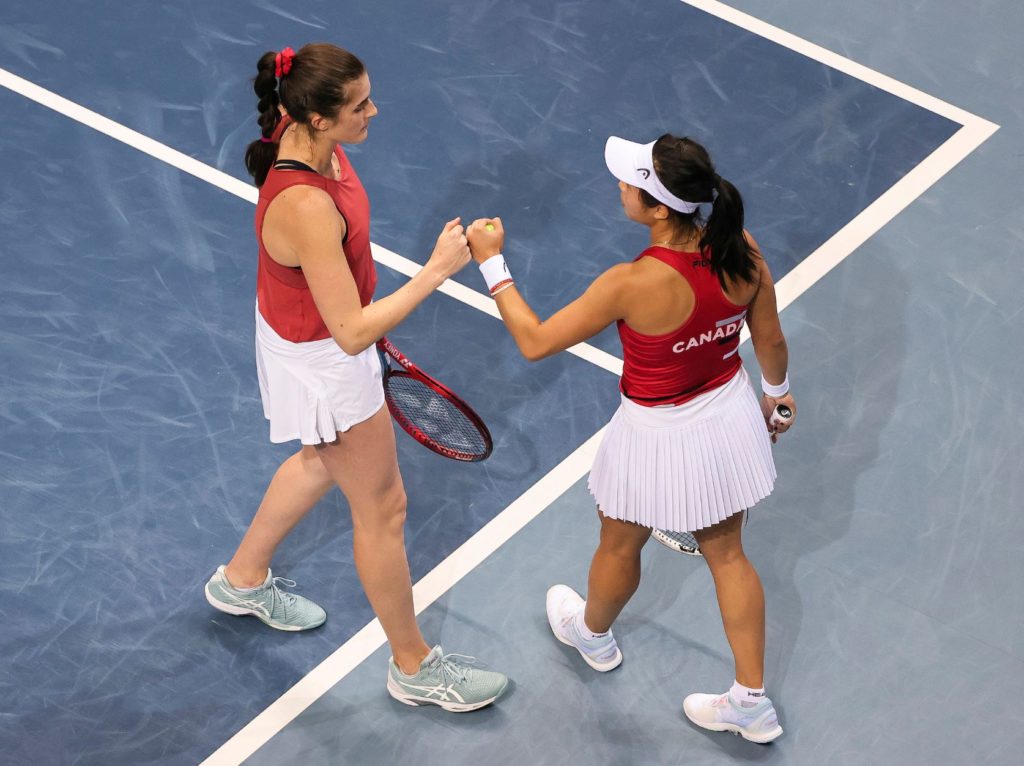
Canada is in Group A with France and the Russian Tennis Federation (RTF since 2019 when Russia, along with its flag and anthem, were served a four-year ban for institutionalized doping).
Russia has dispatched its top five players: Anastasia Pavlyuchenkova (No.16), Daria Kasatkina (No.28), Veronika Kudermetova (No.32), Ekaterina Alexandrova (No.37) and Liudmila Samsonova (No.42).
Alizé Cornet (No.66), Caroline Garcia (No.73), Clara Burel (No.75) and Fiona Ferro (No.98) will fight for France.
I spoke to Sylvain Bruneau on the eve of his departure for Prague, and he laid all the cards on the table. “Without our three clutch players—let’s not forget Eugenie Bouchard, who’s injured—it’s clear we’re the underdogs. But considering the potential of the players who have stood out and caused a few upsets of late, there’s good reason to feel encouraged. And the conditions, the quick indoor courts, tend to favour our team. So, anything’s possible.”
Speaking of the players who’ve had great success this season, Bruneau talked about Rebecca Marino and her fantastic run all the way to the round of 16 at the National Bank Open in Montréal. He also mentioned Françoise Abanda, who put up a terrific fight against Caroline Garcia in Montréal and made the most of a wildcard in Chicago to defeat then World No.65 Danka Kovinic. “She’s posted solid wins in team competitions, often against higher ranking players. You can’t overlook that,” said the captain. “Rebecca has a powerful serve, and that’s an interesting weapon when you play indoors. Of course, we’re also counting on Gabriela, who’s one of the best doubles players in the world.”
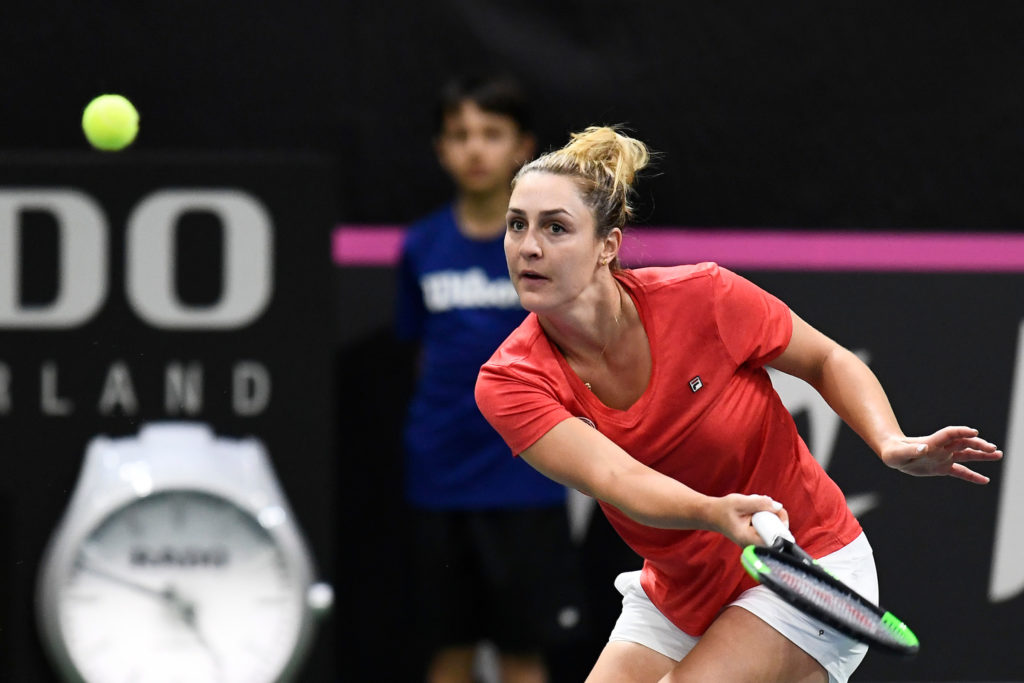
It seems only logical that Marino would play in singles and doubles every day, but Sylvain didn’t make any promises.
The veteran captain also acknowledged that, in addition to having the arsenal to ambush the favourites, our Canadians have been given a rare opportunity. “It’s true that our entry when Hungary backed out is a unique situation, especially as the new format takes off. I’ve never been part of a team competition with the best in the world and I’m excited about it. I’m sure they’ll seize the moment.”
Here’s the schedule to follow Canada in Group A starting Monday, November 1:
Canada vs. France Nov.1 at 5:30 a.m. (Canada / EDT)
Canada vs. RTF Nov.2 at 5:30 a.m. (Canada / EDT)
France vs. RTF Nov.3 at 5:30 a.m. (Canada / EDT)
Our men in Madrid
We’ll come back to Davis Cup, which goes down in Madrid from November 25 to December 5, but, on October 25, Tennis Canada confirmed that the country’s top 3—Félix Auger-Aliassime, Denis Shapovalov and Vasek Pospisil—will be heading to Spain. Along with Brayden Schnur and Peter Polansky, they’ll try to find their way back to the final after their tremendous success in 2019.
In a very similar format to Billie Jean King Cup, the preliminary Davis Cup event puts six teams of three nations in the mix. Canada will play against Kazakhstan and Sweden.
Fingers crossed no one gets injured in the meantime.
Alexis on the up-and-up
Late Sunday afternoon, a face pops up on my tablet.
He smiles, and I recognize him right away, even though a mask covers most of his face. I’m greeted by Alexis Galarneau’s friendly eyes and smile.
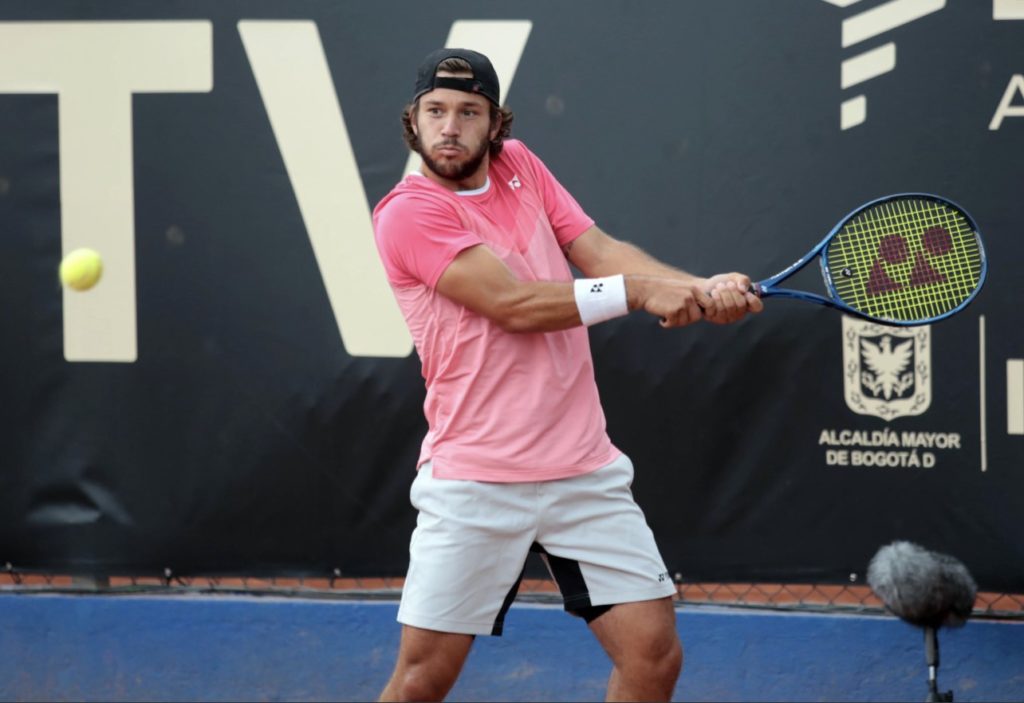
In the lobby of his hotel in Lima, Peru, the Quebecer has just come off the practice courts. He sits down to talk to me about his recent adventures in South America, the upcoming events in the US and his highlights from the past season.
Galarneau is currently making his way up the pro rankings. At 22 years old, he’s the same age as Denis Shapovalov (there’s only a month between them) and a year older than his good friend Félix Auger-Aliassime. Alexis is currently Canada’s No.8.

Like hundreds of others, he competes in Challenger events. Slowly but surely, he’s collecting the points he needs to move up in the hierarchy.
A surprise win over No.110 Daniel Altmaier of Germany on October 21 in Bogota helped him climb to No.336—a career high.
Since the start of the year, including the qualifying event in Lima, he is 21-14.
After Bogota and Lima, he has one more South American tournament in Guayaquil, Ecuador before flying to Knoxville, Tennessee and Champaign, Illinois and then wrapping up the year in Puerto Vallarta, Mexico.
Depending on how things pan out, he could rack up 10 to 80 points and eventually secure his ticket for the qualies of more prestigious events.
Is he happy about his season?
“Considering the circumstances, yes. With the pandemic, I didn’t know I could play so many Challenger events,” he says. “So, from that perspective, I’m gaining a lot of experience touring around the world for several weeks. I’m still learning, but once I understand how things work on the pro tour, I’ll be more comfortable.”
“How things work?” I ask. Tennis seems pretty simple: you win or lose and then deal with the consequences.
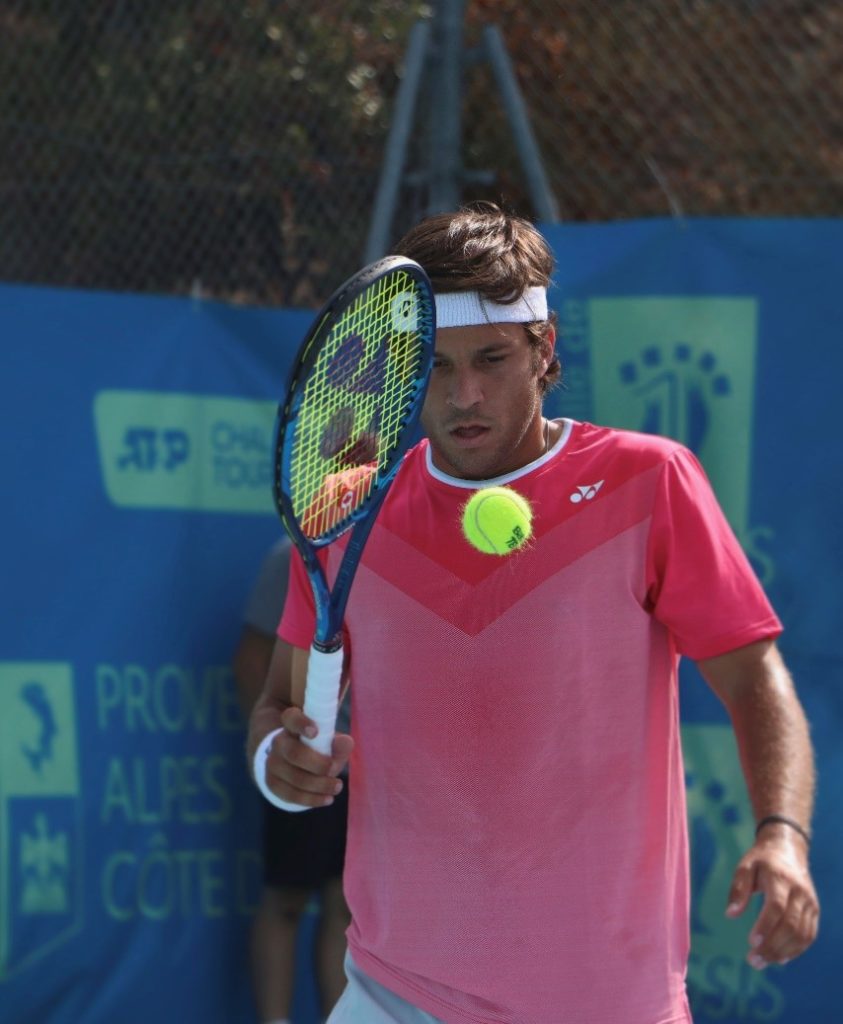
Alexis was actually talking about how to manage things, specifically how to handle the wins and losses and figure out ways to capitalize on them, as well as cope with what has become a very long marathon.
“I’m learning to follow my pre-match routines and manage my emotions even after a win. Now that I’ve graduated university, it’s my full-time job. At first, I put pressure on myself. But I took a step back and now I understand the context of this new step for me to get to the goal I’ve set for myself of becoming a professional tennis player.”
It’s cliché—in sports and in life—but it’s about never getting too high and never getting too low.
There’s also the loneliness: being far away from the people who mean the most and his coach Denis Turcot, with whom he video chats to better understand, improve and tweak things.
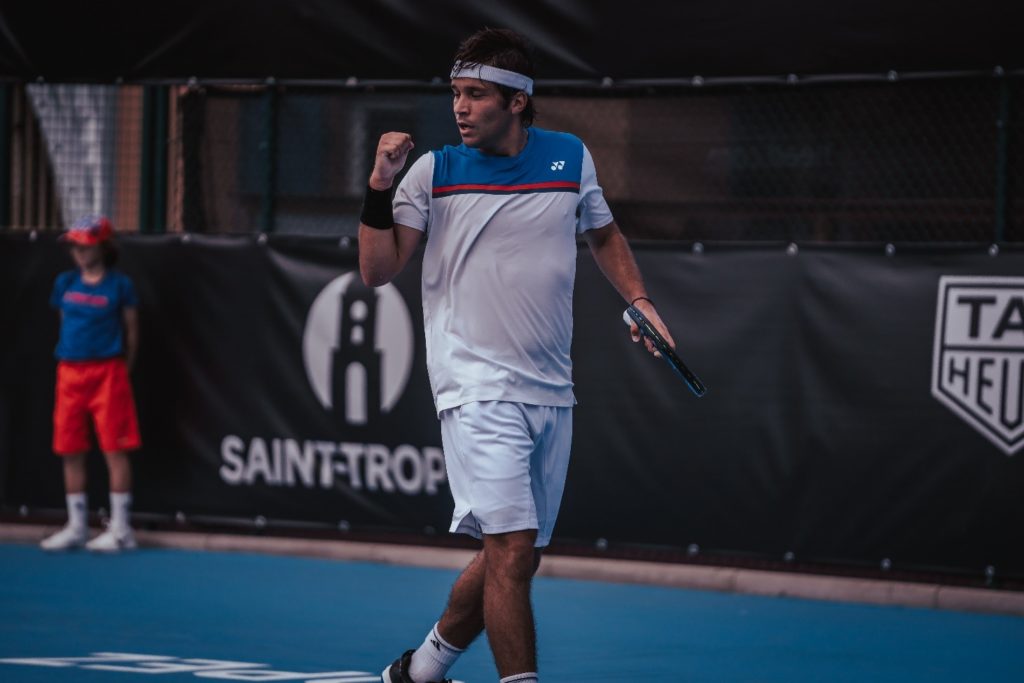
In addition to his win over Altmaier, he’s posted victories this season over former members of the Top 100, including Bernard Tomic, James Ward and Donald Young. As far as his ranking, it should make his tournament planning a little easier.
“Ultimately, it will help me set a schedule. Up until now, my ranking always had me between Challenger and Futures events. I often had to enter both and then I’d end up somewhere at the last minute. That wasn’t great as far as preparation,” Alexis explains.
In terms of his career goals, he isn’t too reserved. His ambition is healthy and legitimate: “I want to make the Top 20. I was just talking about it with Félix and other players. From what I can gather, it’s about taking things step by step. Top 250 will get me into Grand Slam qualifiers. Then Top 150, Top 100. In tennis, things change quickly. We’ve just seen that happen with Leylah.”
I ask him about Félix and if playing doubles with him here in Canada at the National Bank Open was among the highlights this year.

“Absolutely! I was watching TV in my dorm when the phone rang. He said it’d be fun to play in doubles and he was going to ask the tournament for a wildcard. At first, I thought it’d be impossible and that higher ranked players would ask Félix to play. When I found out everything was confirmed, I was really happy!”
As it turns out, the two friends had a good run, losing to Andrey Rublev and Karen Khachanov in two tight sets (6-4, 7-6(6)).
“We came close. That experience boosted my confidence,” he affirms.
Alexis and Félix have known each other for a lot of years. Their friendship started about 12 years ago, when they were in Tennis Québec’s development program. At the time, they were 9 and 8 years old.
The invitation from Félix, his friend and member of the world elite, is a wonderful token of their friendship and an experience Alexis will never forget—no matter how far he goes.
Sacrilege
Can you believe it?! I was shocked and dismayed to see this image of a tennis stadium transformed into a skate park in my Twitter feed!
Now, that isn’t just any tennis venue. That’s Stadio Pietrangeli, the second largest court in Foro Italico, which presented the 1960 Rome Olympics and now hosts the Masters. It’s a gem that merges the Eternal City’s past and present.

It would be tough to name the world’s most breathtaking tennis stadiums, but, in my opinion, Pietrangeli is top 3 material, if not no.1.
It’s original Roman seating may not make it the cushiest but it’s still my dream choice of court if I could play one match anywhere on the planet.

Seeing it transformed like that is pure heresy.
Get in touch with me!
Email: privard@tenniscanada.com
Twitter: @paul6rivard
Follow all our Canadians in action here.

